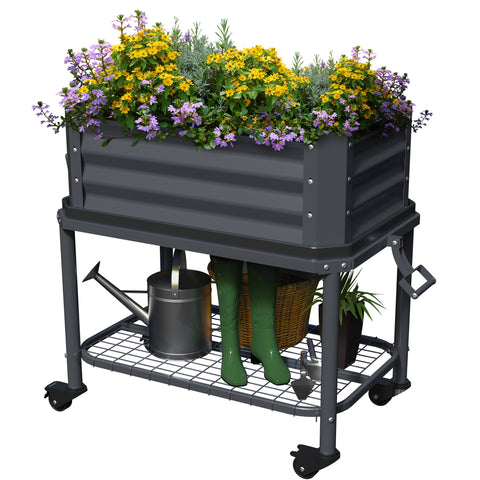Plant and animal diseases are a great threat to the livelihoods of agricultural societies. The term "wilt" does not refer to a specific plant disease, but rather is a general term describing conditions that severely impede the healthy growth of plants. Plant blight has had a significant impact on human populations, migration and diet throughout history.Some of the most famous blight include the potato blight that caused the Irish potato famine of 1846-50, the bacterial leaf blight of rice that swept through Asia in the 1960s, causing up to 80% crop losses, and the southern corn leaf blight epidemic that caused $1 billion in economic losses in 1970-1971.There are many different causes of blight on various crops and economically important vegetables. Many of these pathogens are specific to a small number of plant species and are not genetically related to each other. In this article, we will provide an overview of the different plant diseases known as fusarium wilt and provide a general description of each type and its control methods.The following content also has some reference value for raised garden beds.
What is plant wilt?
Fusarium wilt refers to a group of plant pathogens that cause parts of a plant to turn chlorotic (yellow), brown, and then die. Affected areas may include leaves, branches, flowers, fruits, stems, seedlings, tubers, etc. As with many plant pathogens, many types of fusarium wilt are highly contagious. Bacteria, fungi and oomyces are the causes of fusarium wilt. Weather conditions, such as storms or changes in humidity and temperature, often exacerbate damage. As a general best practice for blight prevention, purchase seeds or disease-free plants from certified suppliers to limit the risk of contamination.

Bacterial disease
Bacteria are unicellular prokaryotes with a wide range of genetic and metabolic diversity. Pathogenic bacteria usually reside in the Spaces between cells and tend to colonize xylem blood vessels. They may also produce plant toxins that cause cell death or necrosis.
White leaf blight
Bacterial fusarium wilt includes two pathogenic bacteria: Pseudomonas Saxi, which affects soybeans, and Pseudomonas syringae. Affects the pissy of peas. Both are early season diseases, most evident on young leaves. P. savastan overwinters on host debris and is spread by rain, wind, or surface contact with infected material. Lilac grass pv. Pisi, on the other hand, is primarily a seed-borne pathogen that affects peas after frost or adverse weather conditions.
When bacteria enter the plant through pores or wounds, they produce a toxin that blocks chlorophyll production. Brown spots can be seen at the edges of the cotyledon, and the seedlings may be stunted or even die. In later stages of the infected plant's growth, the leaves will appear yellow spots, eventually turning reddish brown and drying out into lesions. Although the seeds do not show symptoms, the seed pods may also show lesions and atrophy.
Both types of bacterial wilt can be controlled by planting resistant varieties, waiting to plant after wet or bad weather, and when you practice crop rotation. For P. syringae pv.; Pisi, growers can also purchase disease-free seeds from reputable suppliers.

The bacteria like warm, humid weather and nitrogen-rich environments. The monsoon and typhoon seasons can be particularly destructive. The pathogen can be spread by rain, wind, irrigation, plant to plant contact, and human manipulation during transplantation or when using contaminated tools. The bacteria enter the host by naturally absorbing water or through a wound. Since rice planting requires transplanting, the process can cause root injuries or openings when the tips of seedlings are clipped as part of the operation. Once inside the plant, the pathogen systematically moves through the xylem.
Two symptoms of this disease are long yellow lesions along the leaves and plant wilt (kresek disease). Bacterial exudate is seen in the lesion. Total production will decrease and seeds of infected plants may also show discoloration. In plants with Creszek's disease, the leaves curl and turn gray-green. Plants usually die and cannot survive. The surest way to prevent it is to use disease-resistant varieties, practice field hygiene, and practice proper spacing and fertilizer management.
Common blight
Bacterial fusarium wilt common on leguminous plants
Bacterial wilt common on bean leaves.
Common blight is a warm weather disease caused by campestris pv. Xanthomonas. Beans, beans, mung beans, beans and peas from the garden. It enters plants through natural plant openings or wounds and can affect leaves, stems, pods and seeds. The disease first appears as a watery, angular leaf spot. These spots expand over time and dry out as plant tissue dies. The brown patch will be surrounded by a ring of yellow leaf tissue. On stems, bacteria cause brown patches without yellow rings. Infected stems may also wither. In very humid conditions, discoloration can also be seen in pods and seeds as well as bacteria oozing out.

Common blight can be controlled by using disease-free seeds, practicing crop rotation, removing voluntarily planted plants and weed hosts, and limiting overhead watering to keep leaves dry. Good hygiene is also important, as the bacteria overwinters on the remains of the host and on the surface of the soil. There are also some varieties that have some resistance to disease.









